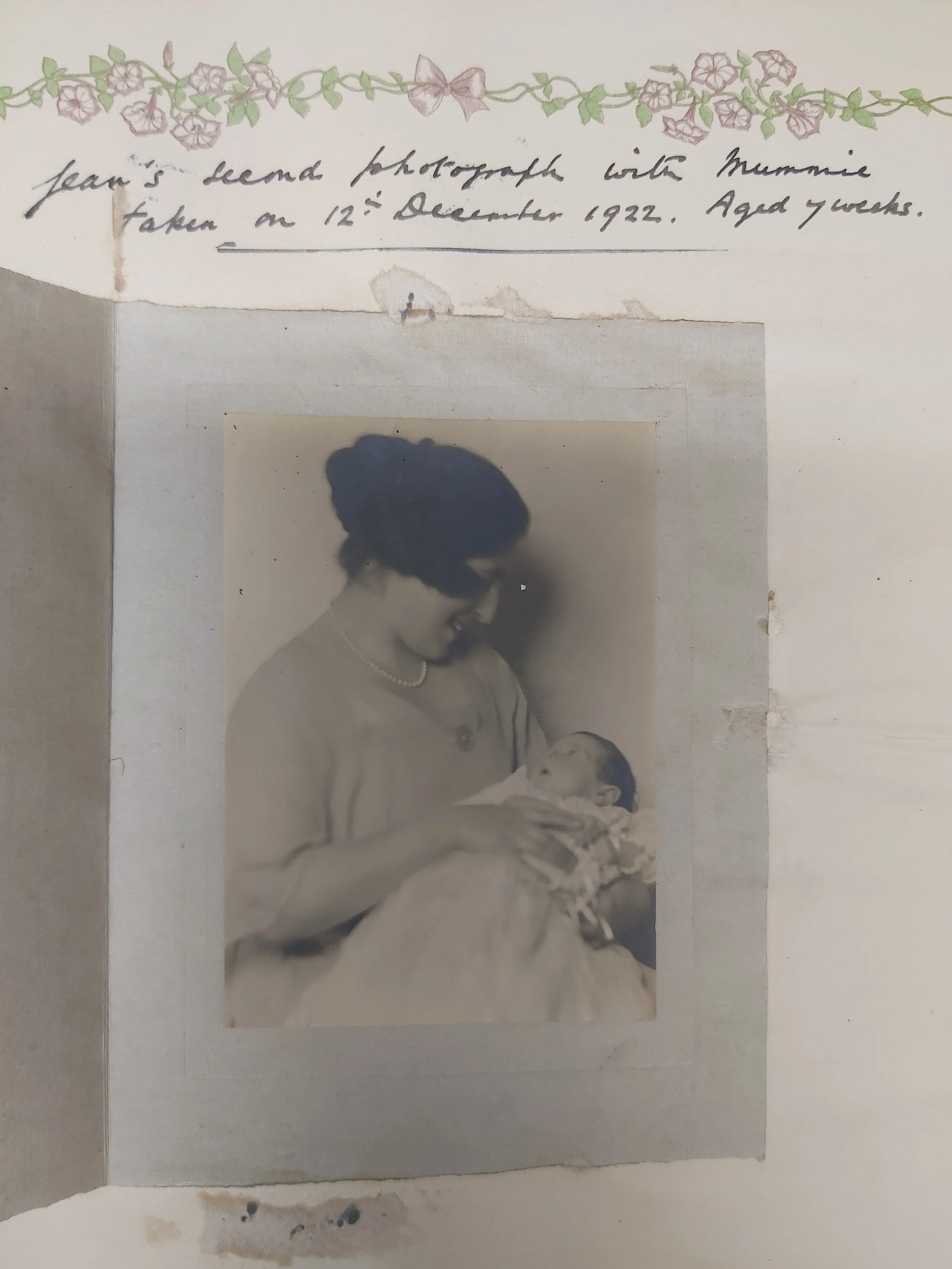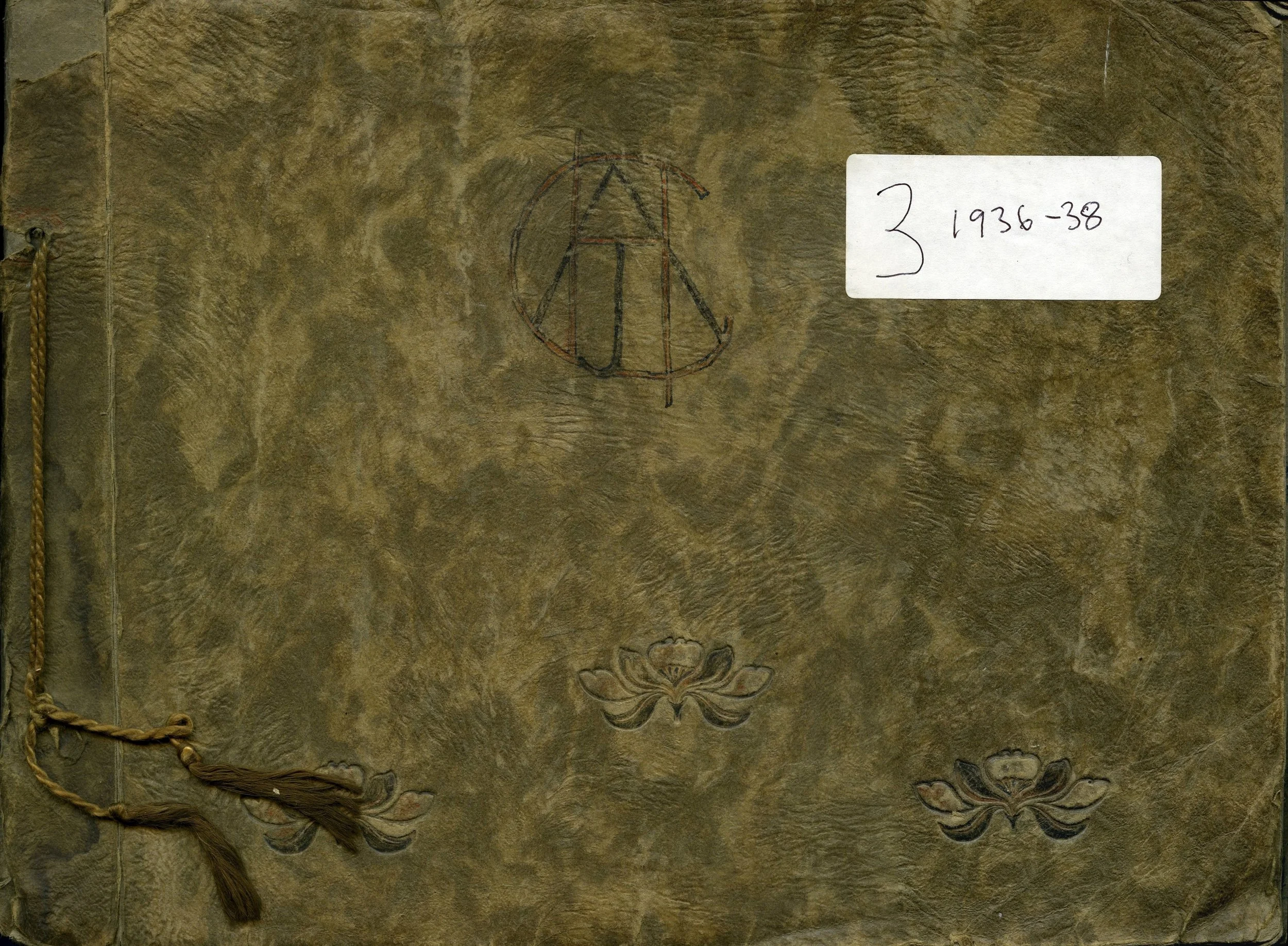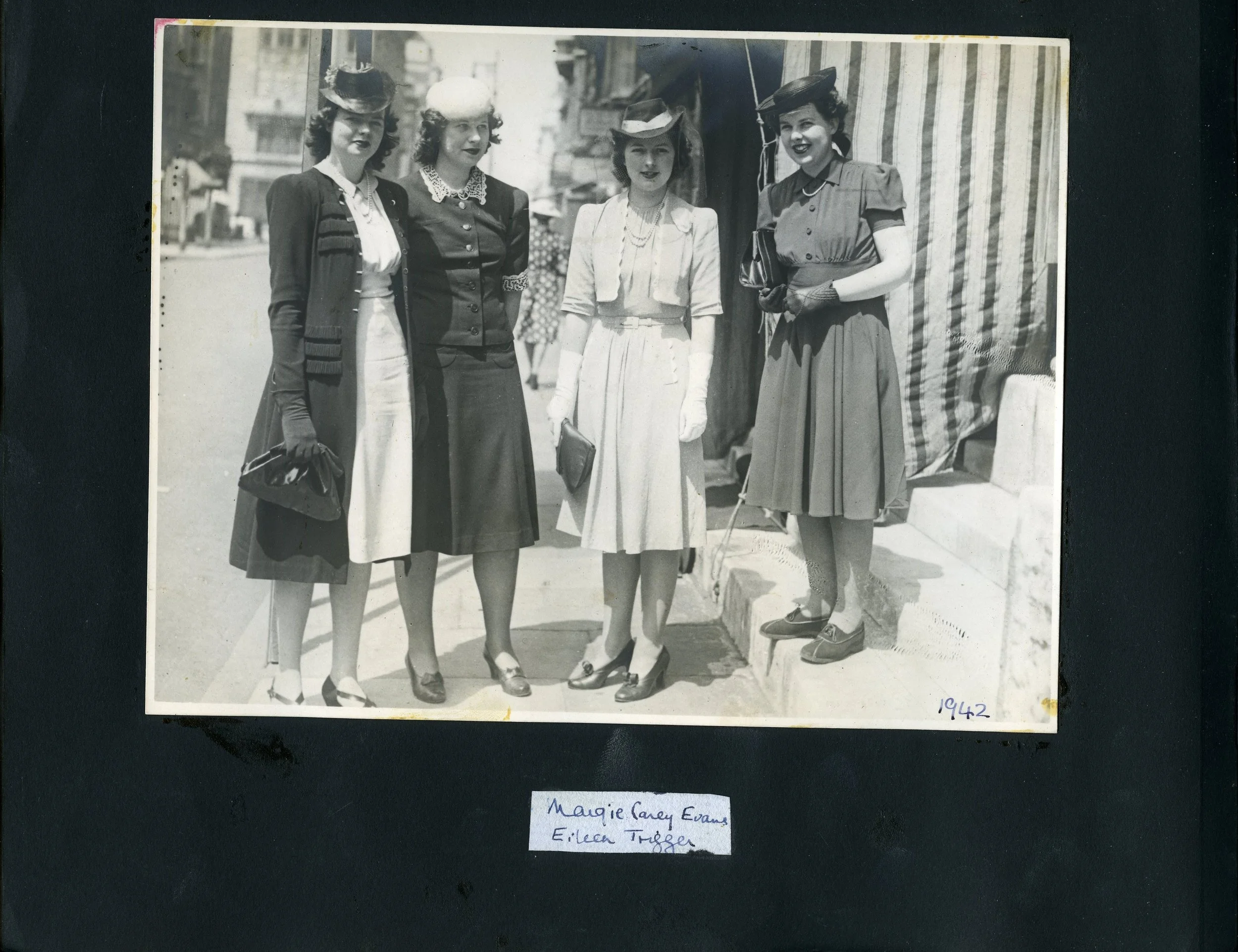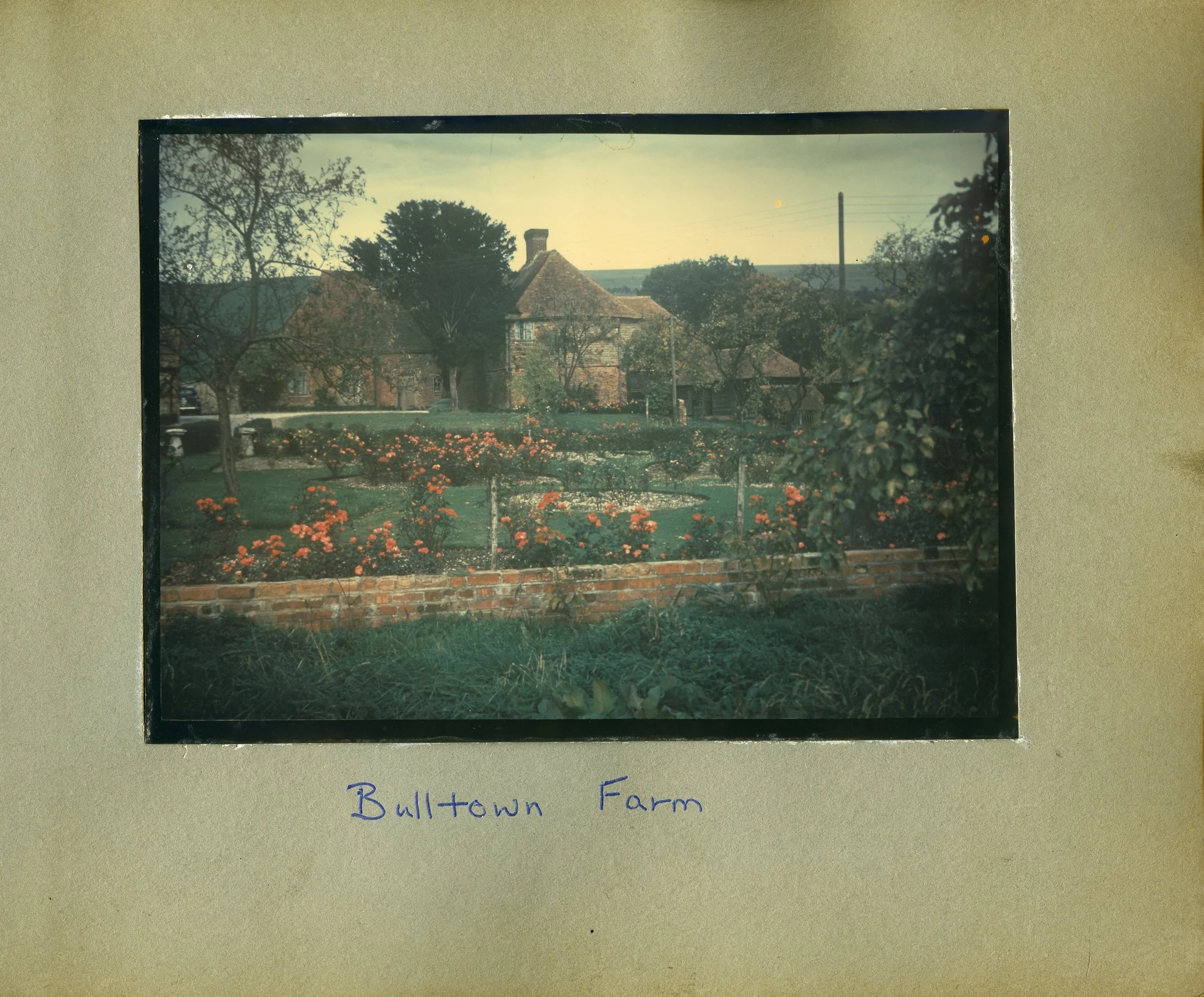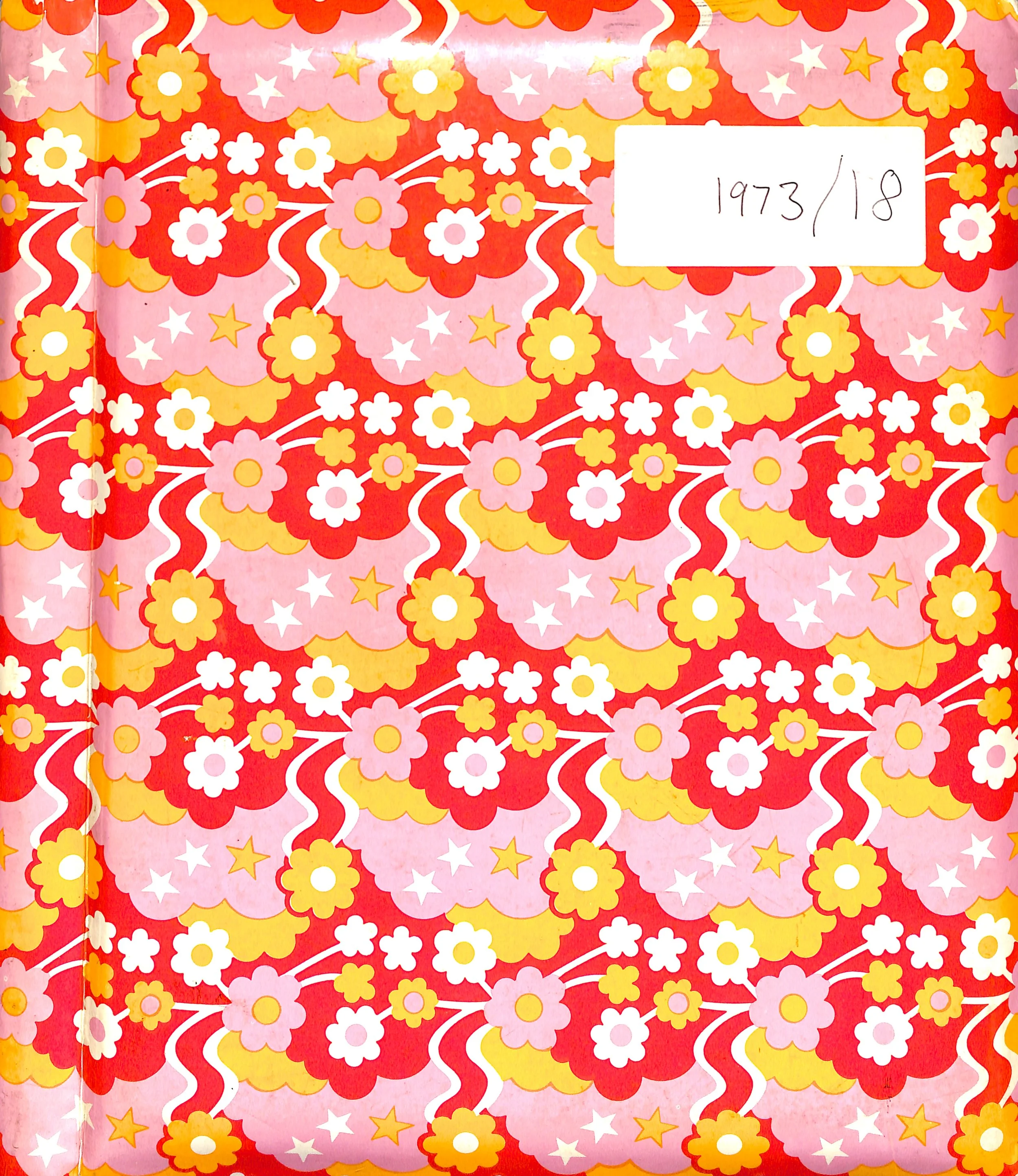
Make it stand out
Snapshots & Scraps:
The Evolution of 20th Century Photo and Scrap albums within the Trumpington Collection
In 2022, the conservation team began work on the housing and conservation of TRUM 1/1-51. This series comprises the photo and scrap albums that span the life of Jean Campbell-Harris. From the photographs of her as a baby in 1922 through to 2017, a year before she died. Click here to see our blog about the conservation work
Through this nearly 100 years of recording her life, we see huge changes in the styles and use of materials in photo and scrap albums, as well as some continuity from earlier times.
A scrapbook or scrap album is a book containing blank pages for the inclusion of photographs and all manner of ephemera and mixed media.
Scrap albums owe their origin to the period before the invention of photography and form part of a continuum stretching from the 1700s (when the word ‘album’ may have first been used) to the present day. We think of the Victorians as synonymous with this type of collecting, but scrapbooking continued to flourish into the twentieth century. The growth of newspapers and domestic photography proved crucial to the popularity of making scrapbooks and albums, as well as the increase in products such as ‘photo scrap albums’ after the First World War.
In the early twentieth century, albums seem to be divided roughly into two classes based on methods of attachment. These were the ‘slip-in’ (to accommodate carte de visite and cabinet cards typically) and the ‘paste-down’ album (where prints are attached by photo corners or adhesives – though the modern ‘self-seal’ or ‘magnetic’ albums might be considered as ‘paste down’ albums). There's also a bit of overlap between the two, where you get preformatted scrapbook designs (drawing on the elements of the slip-in album), but people simply stick down with paste.
All of the Trumpington albums fit into the ‘paste down’ category, being later in date.
They can also be divided into two groups depending on their binding structure – albums with leaves conventionally sewn, glued or hinged to bindings and albums with loose-leaf mechanisms. Both types of albums are represented in the Trumpington collection but with a dominance of the loose-leaf type which virtually replaced more traditional album styles. They appear in large quantities after the First World War and are generally always ‘paste downs’ as mounting was much easier.
In 1922, the Baby book or Baby’s diary (TRUM 1/1), is an example of a type of scrapbook popular since the Victorian period.
It is heavily repaired but does illustrate some of the materials and methods common at the time. The printed decorative pages are very evocative of the era and text is typical blue/black ‘fountain pen’ manuscript ink.
It includes early ‘developed out’ silver-gelatine photographic prints, a telegraph (telegram) and a lock of Jean’s baby hair. At this date, we would not expect to see albumen prints or printing-out-paper prints which had more or less gone out of use after a long period of popularity.
The second album covering 1935-40 (TRUM 1/2) is more of a traditional binding (hinged stub binding) with cloth covered boards and card pages.
Typical of the time is the use of photo-corners to hold the prints to the pages and the dominance of ‘gaslight prints’ or ‘velox’ prints. These were developed out contact prints that could be produced easily and cheaply.
Photo-corners seem to be most popular in the 1920s-30s.
The third album of 1936-38 (TRUM 1/3) is a great example of a cord-binder loose leaf album with the prints being adhered to card pages, reflecting their increasing popularity after the First World War.
Earlier ones have the leaves secured with ribbon/cord (as in this case) though metal screw posts became more popular, followed by ring, spiral or comb bindings.
Loose leaf albums like this made it easier to work on pages individually and then decide the order. Perhaps it also made it possible for multiple people to work on making a scrapbook together.
TRUM 1/4 (1940-47) is interesting because it illustrates the popularity of black pages in photo albums. From the 1890s darker colours became more popular for pages including black, especially after the First World War. The black colour successfully disguised the discolouration of the lignin in the poor quality wood pulp paper or card.
The album from 1941-1951 (TRUM 1/5) is a perfect example of the transition to ballpoint pens which were introduced after the Second World War.
We can see the first use of ballpoint pen about half-way through, in c.1949.
Thereafter, it eventually became a widely used ink in the albums.
Fun fact from James Ward's Adventures in Stationery: A Journey Through Your Pencil Case - by 1950 there were over 50 British ballpoint manufacturers!
The 1953-1960 post bound loose-leaf album (TRUM 1/8) has the first colour photograph (c.1953 from its place in the album).
Every print before this was monochrome (black & white) though most of the prints in this album are still monochrome.
It would have been very expensive to have colour prints at this time since the first commercially viable dye-based multi-layer colour film was only available in the UK from the late 1930s.
And eventually, with the album of 1965-66 (TRUM 1/12) we find the first ‘self-seal’ or ‘magnetic’ loose-leaf album which then dominates the album style until we enter the era of digital prints.
By this time, the prints enclosed are roughly equal numbers of colour and black and white.
These magnetic albums present a conservation challenge which is different, and in some ways worse, to what went before. The rubber-based adhesive on the pages which makes it ‘self-adhesive’ and the PVC or other plastic overlays are not good for long-term preservation.
Most of the albums after this point are loose-leaf, magnetic and fairly cheaply available proprietary brands. Colour photos start to dominate - with ‘resin coated’ colour prints (with plastic layers) increasing after their introduction in 1968.
In TRUM 1/13, we see the first plastic comb binder within the structure.
This album has glassine overlays with a ‘web’ embossing which seems to me to hark back to earlier times. It may also reflect the growing importance which scrapbook publishers placed on the need for people to protect their scrapbooks – although in fact, the glassine itself is very poor quality and acidic and more likely to cause damage than protect!
While Mrs Jean Barker, as she was then known, was Mayor (1971-72) her contemporary presentation albums (TRUM 1/16-18 were of a much better quality (leather covered, gold tooled and linen-hinged) before reverting to the more amateur magnetic type.
I like the covers of TRUM 1/19 (1973) because they are a great example of the flamboyance of the era and this was the year that the Archives Centre was opened!
It was also spiral bound which became popular in the 70s.
It is interesting to note that TRUM 1/22 (1979-80) is a magnetic album that remains very similar to the first one (1965-66), showing very little evolution of this style.
Helpfully, the fly leaf of TRUM 1/29 describes the binding style very clearly.
The photographic process (including the types of negatives) evolved more than the album style over this period.
TRUM 1/36 (1994-95) is an example where the album has plastic wallets for 35mm negatives included at the back. Colour prints tend to be very unstable with colour shift very apparent in many, though efforts over the years to improve the stability did pay off to some degree.
The albums just seem to get larger, but remain essentially the same until TRUM 1/47. This volume brings together digital prints in a Photobox book, ordered online in 2013. We have truly entered the digital age…
Bibliography
With thanks to Cherish Watton-Colbrook for adding context to this article. Click here to learn more about her research.
Some Observations on the Development of Albums Containing Photographs and Aspects of Their Deterioration – Bryan Clarke 1992
Photographs of the Past Process and Preservation – Bertrand Lavedrine
BPG Scrapbooks - MediaWiki (conservation-wiki.com)
A short history of colour photography | National Science and Media Museum


